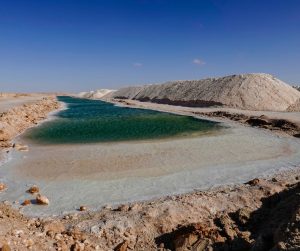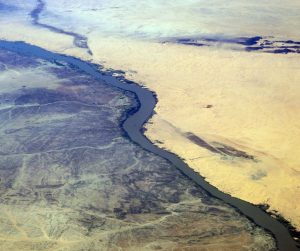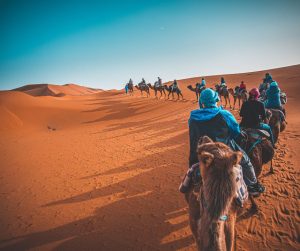

Home » Weekly Blog » The Diverse Landscapes of Egypt: From Deserts to Oases
Egypt, a land steeped in ancient history and mystique, is a country that captivates not only with its historical wonders but also with its remarkable geographical diversity. Nestled at the crossroads of Africa and the Middle East, Egypt boasts a terrain that ranges from vast deserts to lush oases, each playing a crucial role in shaping the nation’s identity. In this exploration, we embark on a journey through the diverse landscapes of Egypt, uncovering the stories written by its deserts, marveling at the paradises hidden within its oases, and understanding the significance of its contrasting Nile Delta and Valley.
A. Brief Overview of Egypt’s Geographical Diversity
Egypt’s geographical canvas is a masterpiece painted with contrasting strokes. To the east, the country is bordered by the arid Sinai Peninsula, surrounded by the Mediterranean Sea to the north and the Red Sea to the east. The vast Sahara Desert stretches across the western and southern parts of the nation, creating an otherworldly landscape of golden sand dunes and rocky plateaus. In stark contrast, the Nile River, the lifeblood of Egypt, cuts through the heart of the country, giving birth to the fertile Nile Delta in the north and the iconic Nile Valley that winds its way south.
B. Significance of Egypt’s Landscapes in Shaping History and Culture
The diverse landscapes of Egypt aren’t mere backdrops to the nation’s narrative; they are central characters that have influenced the course of history and shaped the cultural tapestry of the Egyptian people. The deserts, with their harsh beauty, have been both a barrier and a gateway, defining trade routes and serving as the stage for ancient civilizations. The oases, with their unexpected lushness, have been sanctuaries and waypoints for travelers and settlers. The Nile Delta and Valley, with their fertile soil, have nurtured agriculture and sustained communities for millennia.
As we delve into the distinct features of each landscape, we will unravel the stories etched into the sands, oases, and riverbanks of Egypt, understanding how the country’s geography continues to be a dynamic force in its past, present, and future. Join us on this expedition through The Diverse Landscapes of Egypt: From Deserts to Oases.

A. Overview of the Major Deserts in Egypt
Egypt’s deserts are vast expanses that stretch across the country, creating a dramatic and awe-inspiring backdrop. Three primary deserts define Egypt’s arid landscape:
The Sahara Desert: Covering the western and southern regions, the Sahara is the world’s largest hot desert. Its endless stretches of sand dunes and rocky plateaus have long fascinated explorers and shaped the historical narrative of North Africa.
The Libyan Desert: Part of the Sahara, the Libyan Desert extends into the westernmost part of Egypt. This region is known for its mesmerizing landscapes, including the Great Sand Sea and the Gilf Kebir plateau, which holds prehistoric rock art.
The Arabian Desert: To the east, the Arabian Desert spans into Egypt’s Sinai Peninsula. Characterized by rugged mountains and vast plains, this desert has been a crossroads for ancient trade routes, connecting Egypt to the Arabian Peninsula.
B. Unique Features and Characteristics of Each Desert
The Sahara Desert:
The Libyan Desert:
The Arabian Desert:
C. Exploration of How the Deserts Have Influenced Egyptian Life and Civilization
Historical Importance:
Modern Challenges and Opportunities:
Join us as we venture deeper into the heart of these deserts, uncovering the tales written in the sands and rocks, and understanding the intricate relationship between Egypt and its formidable deserts.
A. Discovering Egypt’s Hidden Gems
Within the expansive deserts of Egypt lie unexpected treasures—oases, vibrant enclaves flourishing amidst the arid vastness. These oases, sustained by underground aquifers and natural springs, defy the conventional image of a desert and offer sanctuaries of greenery and life.
B. Journeying Through Distinct Oases
Siwa Oasis:
Bahariya Oasis:
Kharga Oasis:
Dakhla Oasis:
Farafra Oasis:
C. Ecosystems and Wonders Within Oases
Flora and Fauna:
Hot Springs and Lakes:
D. Oases: Pillars of Agriculture and Sustainability
Agricultural Oasis Economy:
Cultural Significance:
As we venture through these flourishing oases, we uncover the delicate equilibrium between life and the desert, marveling at the resilience of these paradises hidden within Egypt’s seemingly barren landscapes. Join us in the subsequent segment as we explore the captivating landscapes of the Nile Delta and Valley, where the river itself narrates a tale of abundance and sustenance.

A. The Fertile Nile Delta:
Agricultural Abundance:
Biodiversity and Wetlands:
B. The Iconic Nile River Valley:
Historical Lifeline:
Trade and Transportation:
C. Interdependence of the Delta and Valley:
Symbiotic Relationship:
Modern Challenges and Solutions:
As we explore the contrasting landscapes of the Nile Delta’s agricultural abundance and the historical significance of the Nile River Valley, we witness the intricate dance between nature and civilization. Join us in the upcoming sections as we delve into how human interaction has shaped and continues to shape these diverse landscapes, from ancient settlements to modern conservation efforts.
A. Agriculture and Irrigation Practices in Different Regions:
Traditional Practices:
Modern Innovations:
B. Ancient and Modern Settlements:
Historical Nile Delta Cities:
Nile Valley Marvels:
C. Conservation Efforts and Challenges:
Preserving Biodiversity:
Sustainable Development:
D. Modern Challenges and Future Prospects:
Population Pressure:
Climate Change Adaptation:
As we unravel the complex relationship between humanity and Egypt’s varied landscapes, we witness the evolution of settlements, agricultural practices, and conservation efforts that have shaped and continue to shape the nation’s intricate tapestry. Join us in the concluding sections as we explore the allure of these landscapes for tourists and delve into the economic and cultural impact of tourism on local communities.

A. Popular Destinations for Tourists Seeking Diverse Landscapes:
Desert Expeditions:
Oasis Retreats:
Nile Cruises:
B. Outdoor Activities and Adventures in Different Regions:
Desert Treks:
Oasis Exploration:
Historical Tours:
C. The Economic Impact of Tourism on Local Communities:
Job Creation:
Cultural Exchange:
D. Sustainable Tourism Practices:
Conservation and Preservation:
Community Involvement:
As we conclude our exploration, we recognize the dual role of tourism—bringing economic benefits to local communities while highlighting the need for responsible and sustainable practices to ensure the preservation of Egypt’s extraordinary landscapes for future generations. Join us in the final section as we recap the diverse beauty of Egypt and emphasize the ongoing importance of preserving and appreciating these landscapes.
A. Recap of Egypt’s Diverse Landscapes:
As we conclude our journey through the diverse landscapes of Egypt—from the enchanting deserts to the verdant oases, and the fertile Nile Delta to the historical Nile Valley—it becomes evident that Egypt’s beauty lies in its rich tapestry of contrasts. The golden sands of the deserts, the hidden paradises within oases, and the life-nurturing banks of the Nile have collectively shaped a nation with a unique blend of history, culture, and natural wonders.
B. The Ongoing Importance of Preserving and Appreciating these Landscapes:
Cultural Heritage:
Environmental Stewardship:
Tourism’s Role in Conservation:
Adaptation to Challenges:
C. Encouragement for Readers to Explore the Diverse Beauty of Egypt:
As we reflect on the diverse landscapes of Egypt, we extend an invitation to our readers to embark on their own journeys of exploration. Whether tracing the footsteps of ancient civilizations in the Nile Valley, marveling at the surreal landscapes of the White Desert, or experiencing the tranquility of an oasis retreat, Egypt offers a myriad of experiences for every traveler.
In concluding our exploration, we celebrate the resilient spirit of Egypt’s landscapes and the timeless stories they tell. Let us continue to appreciate, preserve, and pass on the legacy of these diverse landscapes for generations to come. Egypt’s beauty is not only in its history but in the harmonious dance between its people and the land they call home—a dance that continues to unfold, inviting all to be a part of its rhythm.
Sign up to hear about our upcoming adventures, monthly newsletter, exclusive offers, and more!
Required*
Not Ready to book?
Get regular updates on upcoming tour and special promotions.







Sign up for our Mailing List to get updates on our current offerings.

We look forward to seeing you on one of our tours!